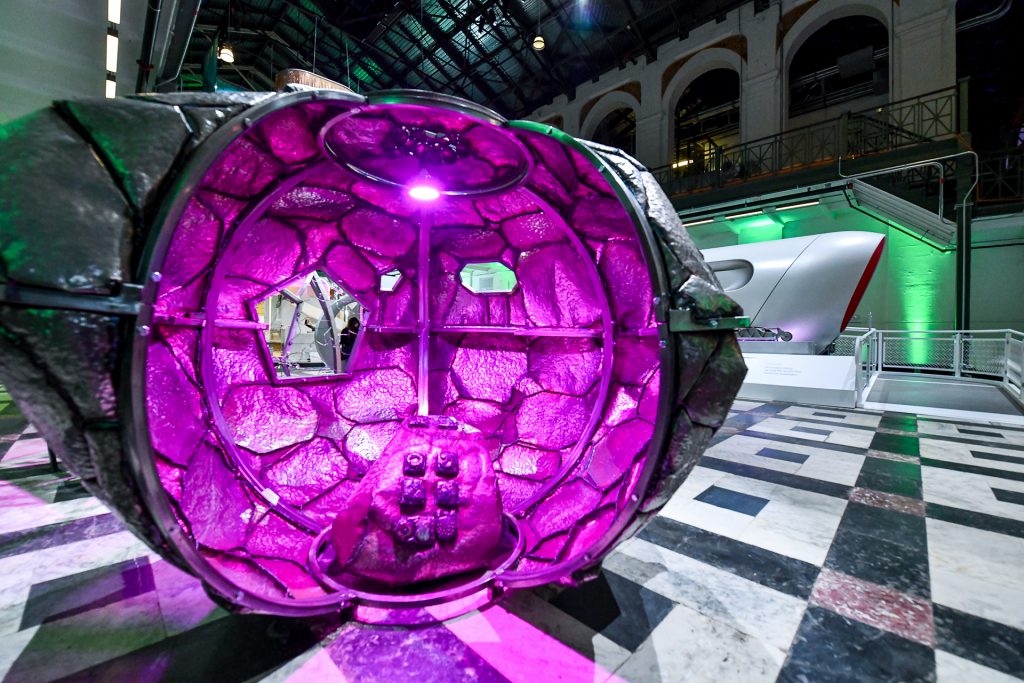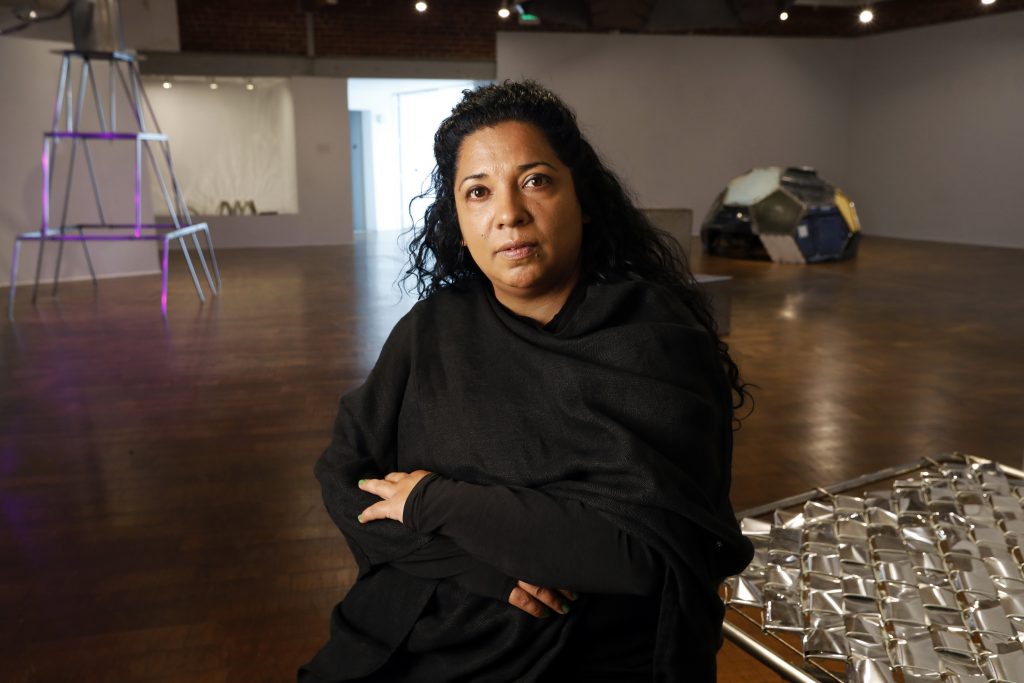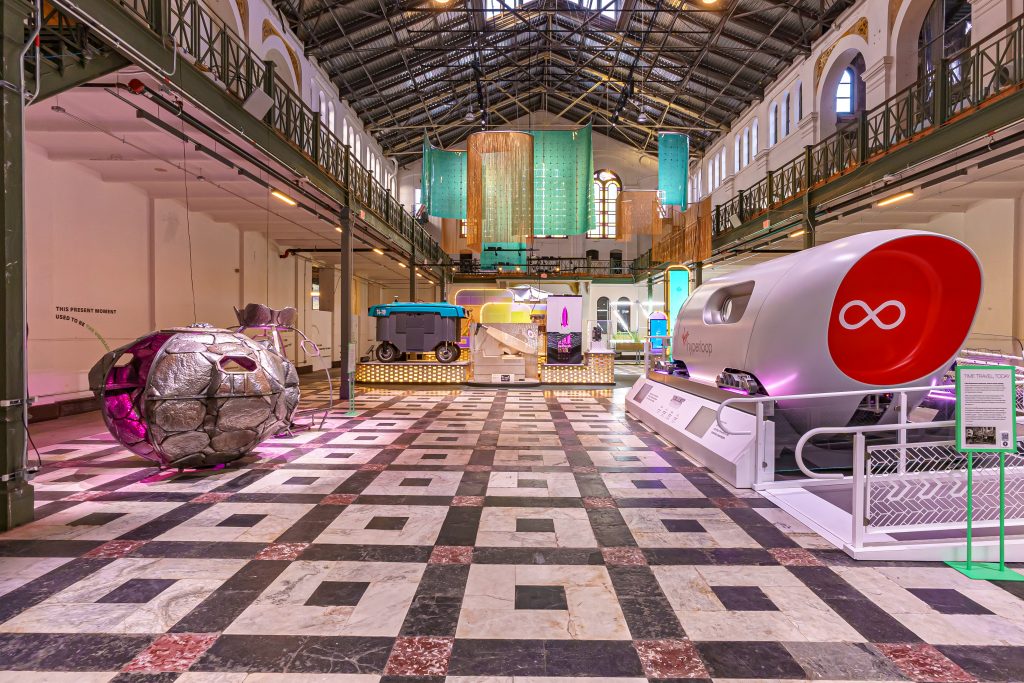Beatriz Cortez’s Chultun El Semillero

Los Angeles-based artist Beatriz Cortez creates a space-time capsule inspired by both ancient Mayan “chultunes,” stone containers carved to preserve precious natural and spiritual materials, and the 20th-century history of space travel. For Chultun El Semillero, Cortez will create her chultunes out of welded steel, fill them with living plants, seeds, and other tools, and carve them with a mathematical formula offering directions for the survival of life on Earth.
Based on archival research at the Smithsonian’s National Museum of the American Indian, collaboration with Indigenous groups in her native Central America, and NASA’s experiments in growing plants in space, Cortez imagines her work as a speculative space-time capsule to carry ancestral Indigenous knowledge into the future. Chultun El Semillero was also made at a time of debate about COVID-19 vaccine distribution and will invite visitors to consider who has access to future resources and how they might be distributed.
READ MORE
ARTNET: To Celebrate Its 175th Birthday, The Smithsonian Will Stage Blowout Exhibition featuring Five New Commissions read more SMITHSONIAN MAGAZINE: IMMERSE YOURSELF IN FIVE FUTURISTIC WORLDS read moreSEE MORE


Artist Statement
Beatriz Cortez is a multidisciplinary artist based in Los Angeles. Her work explores simultaneity, life in different temporalities and versions of modernity, the untimely, and speculative imaginaries of the future. Chultún El Semillero is a capsule that preserves the knowledge and ancient technologies of ancestral peoples of the Americas.
In ancient times, inspired by a series of subterranean pools called cenotes, the ancient Maya in the lower Yucatan peninsula carved hundreds of underground spaces in the stone foundation. These subterranean spaces known as chultunes served as storage containers for water, food, seeds, and other precious materials. For this installation Beatriz Cortez has imagined these structures as time machines. The artist will build a speculative underground chultun imagined simultaneously as a carved space under the ground and as a traveling space capsule preserving ancient seeds in orbit, for the humans of the future.
One of the lessons that these seeds contain is that life is only possible through cosmic, interspecies collaborations, and through the sustained care of many generations of different species working to preserve, reproduce the atmosphere, the environment, the earth. Preserved as they are in this safe capsule, a problem emerges: What is their destiny? Who will benefit from these seeds? How will they be distributed in the future?
Made in times of pandemic and impacted by discussions about distribution plans for the vaccine, Chultún El Semillero also invites us to consider who has access to these resources and how they might be distributed in the future.
The work is based on archival research, partly with Smithsonian’s National Museum of the American Indian; conversations with Indigenous leaders in what is now El Salvador, Guatemala, and Honduras; and inspired by Veggie, a series of experiments aimed at growing plants in space that NASA has conducted at the International Space Station. Chultún El Semillero will hold a collection of seeds indigenous to the Americas as well as a collection of plants that speculates about the best way to preserve viable seeds: the idea that planting the seeds, nurturing them, and cultivating the plants, is the best way to maintain viable seeds across generations, and to preserve them, their names, their cultural meaning, for the future. The interior of the structure will be illuminated with pink grow lights, which are good for the plants and yet provide the garden an artificial glow.
In the interior of the structure a message will be speculatively carved in the stone. It will be a message encapsulated in a diagram and an equation containing the directions for the distribution of seeds for the humans of the future. For this equation the artist will collaborate with her brother, renowned mathematician, Ricardo Cortez.
About Beatriz Cortez
Beatriz Cortez is a multidisciplinary artist based in Los Angeles. Her work explores simultaneity, life in different temporalities and versions of modernity, the untimely, and speculative imaginaries of the future. She has had numerous solo exhibitions and has participated in group exhibitions nationally and internationally. She has exhibited at the Rockefeller Center, New York; Craft Contemporary Museum, Los Angeles; Clockshop, Los Angeles; Vincent Price Art Museum, Los Angeles; Museo MARTE, El Salvador; Hammer Museum, Los Angeles; BANK/MABSOCIETY, Shanghai, China; Whitney Museum of American Art, New York; Centro Cultural Metropolitano, Quito, Ecuador; among others. Currently, her work is on view in Interstates of Mind and Seeds of Resistance at the MSU Broad Museum; Mesotrópicos at the Museo de Arte Contemporáneo in Panama; Making Time at the Craft Contemporary Museum in Los Angeles; and Intergalactix: Against Isolation at the Los Angeles Contemporary Exhibitions in Los Angeles, CA. Cortez has received numerous awards including the Longenecker-Roth Artist Residence at UCSD (2021), Artadia Los Angeles Award (2020), Frieze LIFEWTR Inaugural Sculpture Prize (2019), Rema Hort Mann Foundation Emerging Artist Grant (2018), and California Community Foundation Fellowship for Visual Artists (2016), among others. She holds an MFA from the California Institute of the Arts, and a doctorate from Arizona State University. She teaches in the Department of Central American and Transborder Studies at California State University, Northridge.


